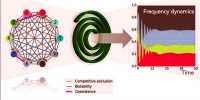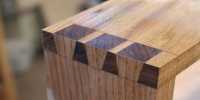The mastery of light is a major element of science fiction, from photon torpedoes to lightsabers to holograms. This latest technology brings success and thus actually represents the forms: scientists have a way to display the hologram from thin air. As published in scientific reports, the team uses so-called optical trap displays. A particle is trapped in the air and transferred to a contour of one size. After orbiting the particle, the path is illuminated by visible laser light, creating an image.
The image needs to be reproduced about 10 times per second due to the rate of eye concussion – so for now these images are small tiny but Yoda rightly says that size is not important, because these images are great even if they are small. Lead co-author Dan Smalley, from Brigham Young University, said in a statement, “On most 3D displays you need to see a screen, but our technology allows us to create images floating in space – and they’re physical; not a mirage.”
“This technology can create animated animated content that orbits or crawls or explodes” “around every physical object.” The team created a miniature visualization of Yoda and Darth Vader, respectively, with a green lightsaber and a red lightsaber in front of them. A war that didn’t happen in Canon, but its actual hologram doesn’t diminish how it looks. There is also a small exchange of enterprises and the exchange of fire in a Klingon Bird-of-Love, the hologram not only discovers the path of the photon torpedo, but also causes a slight explosion.
They also show a stick figure walking at the fingertips of one of the students involved in the work. There are ample reasons to be excited even after the technology is still evolving. Smalley explained, “The scenes you create are real, what you see; no computer is generated about them.” “It’s not like the movies, where the lightsaber or the photon torpedo was never really in the physical place.
The team also embarked on clever optical techniques to transcend the physical limits of the display. For example, they can make the presence of an object as far away as it actually is. “We can play some fancy techniques with Motion Parallax and we can physically make the show a lot bigger,” added co-lead author Wesley Rogers. “This method allows us to create the magic of much deeper displays up to theoretically infinitely large displays.”
















